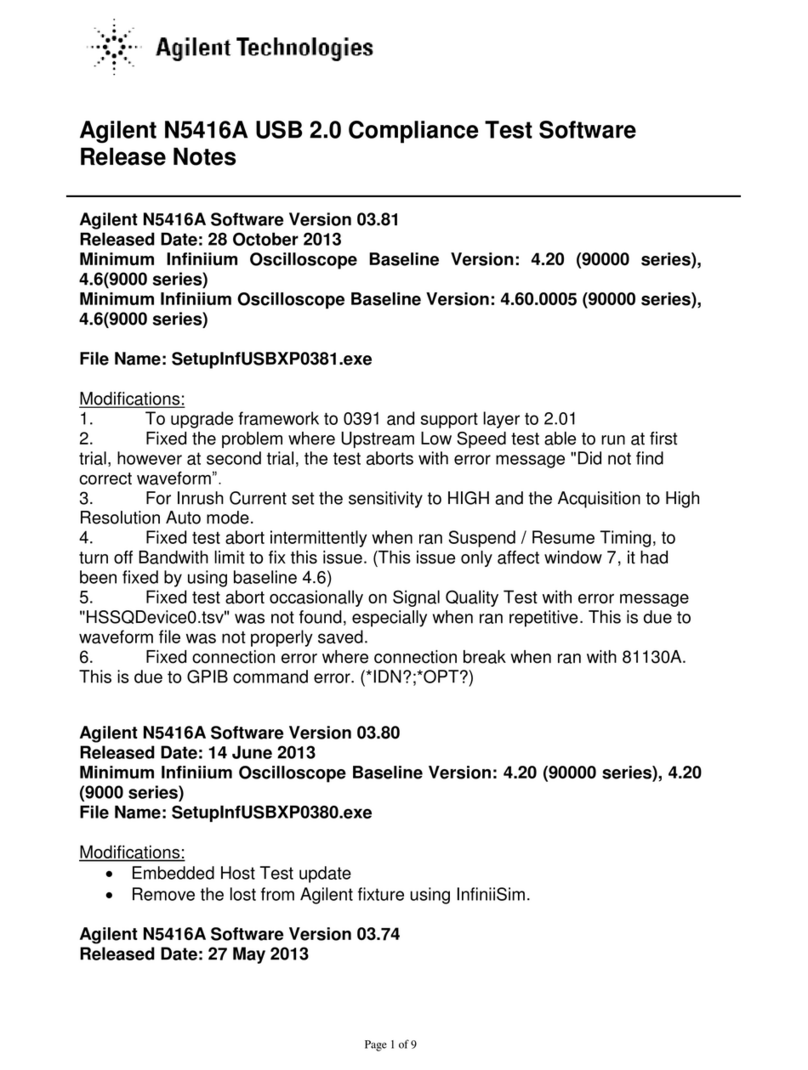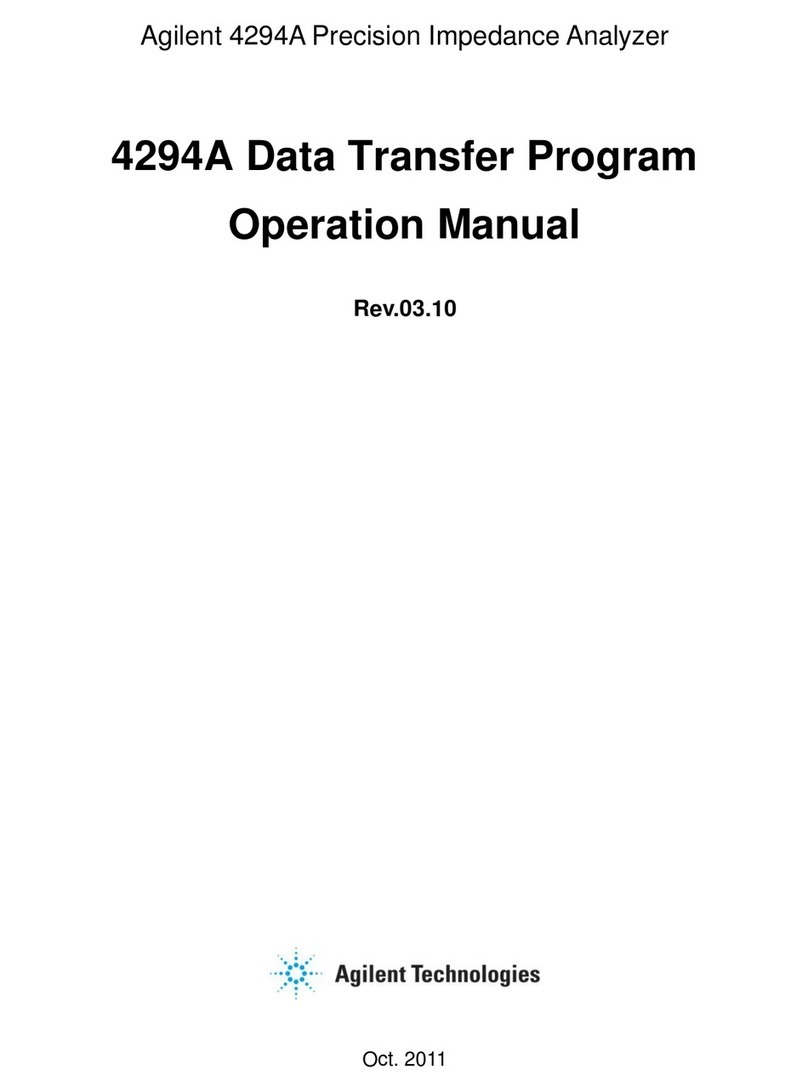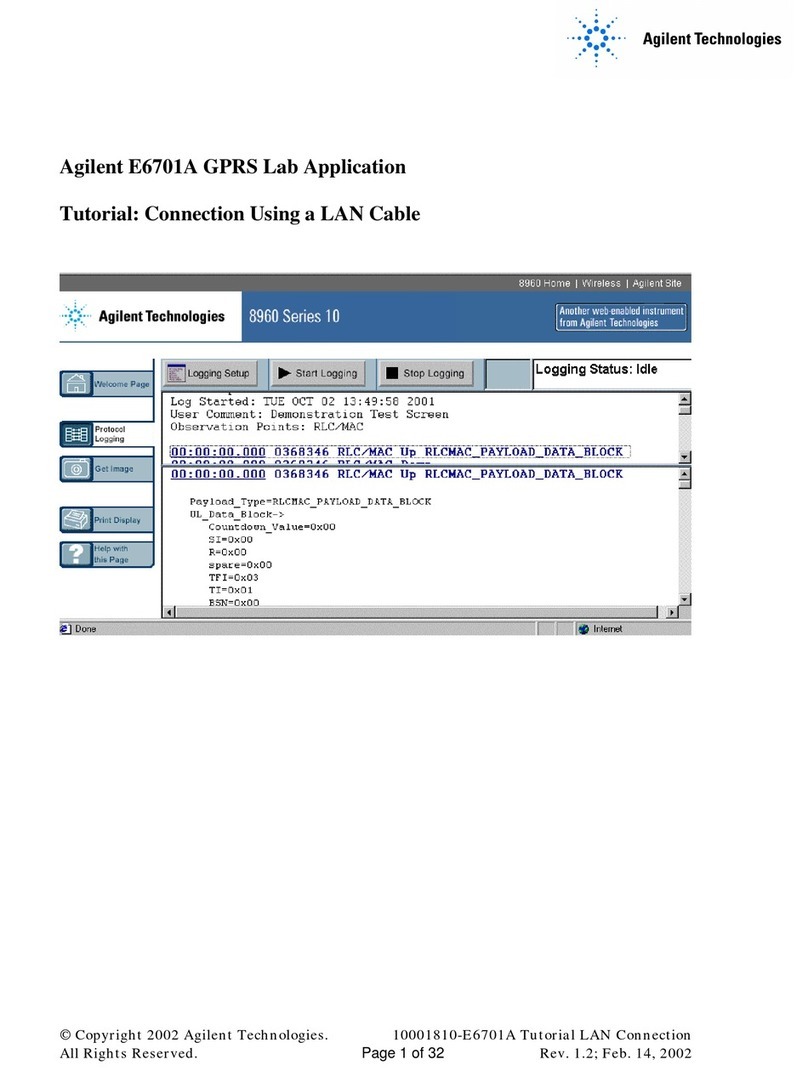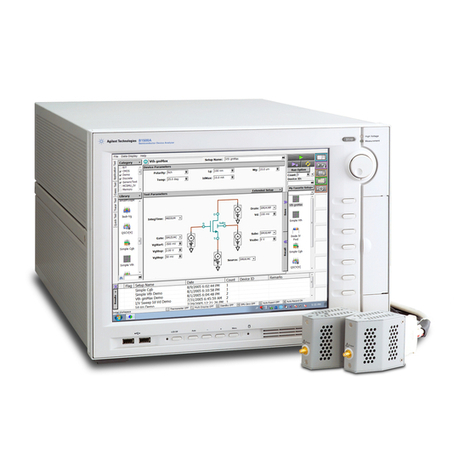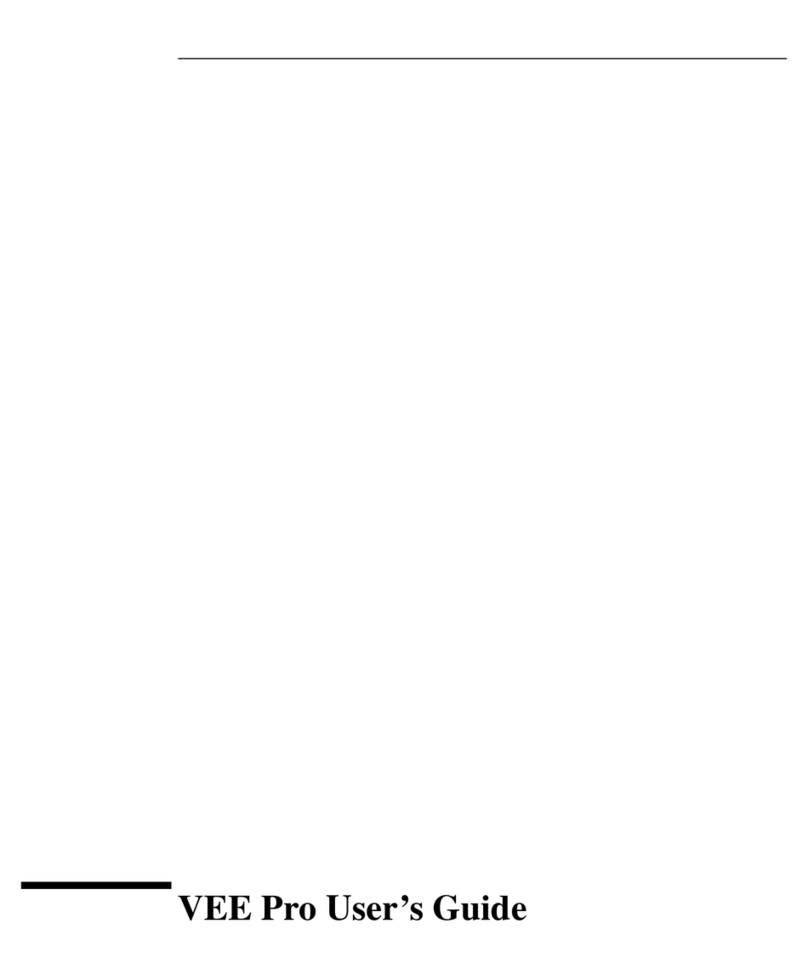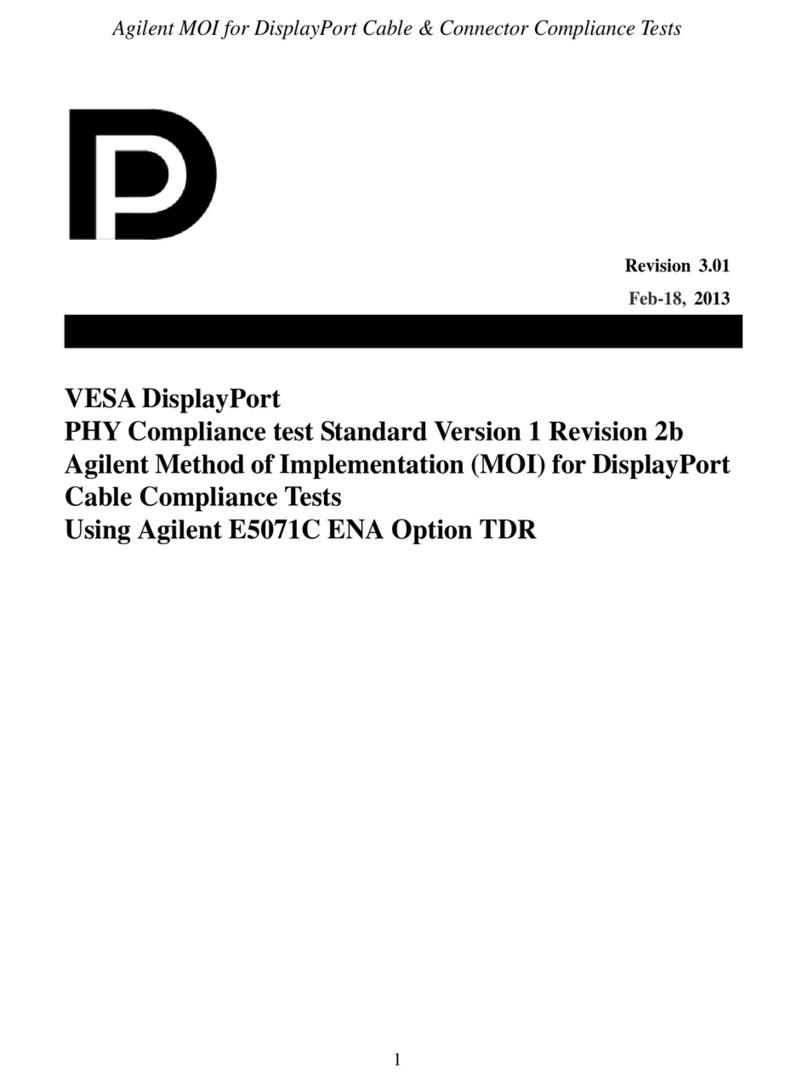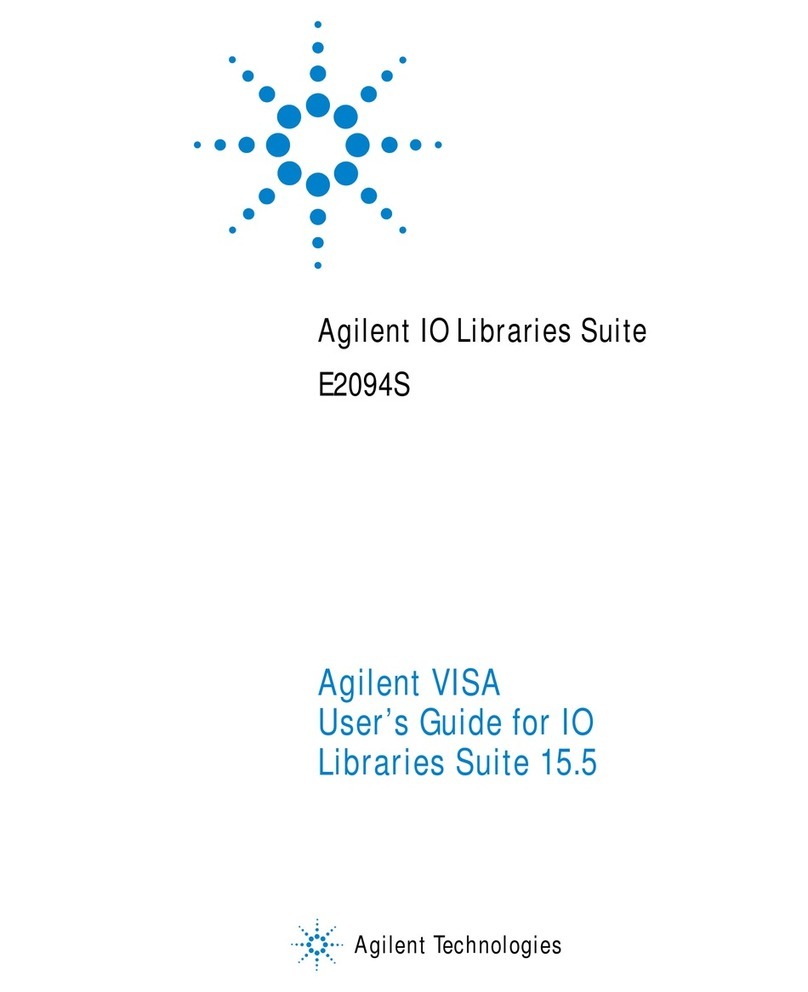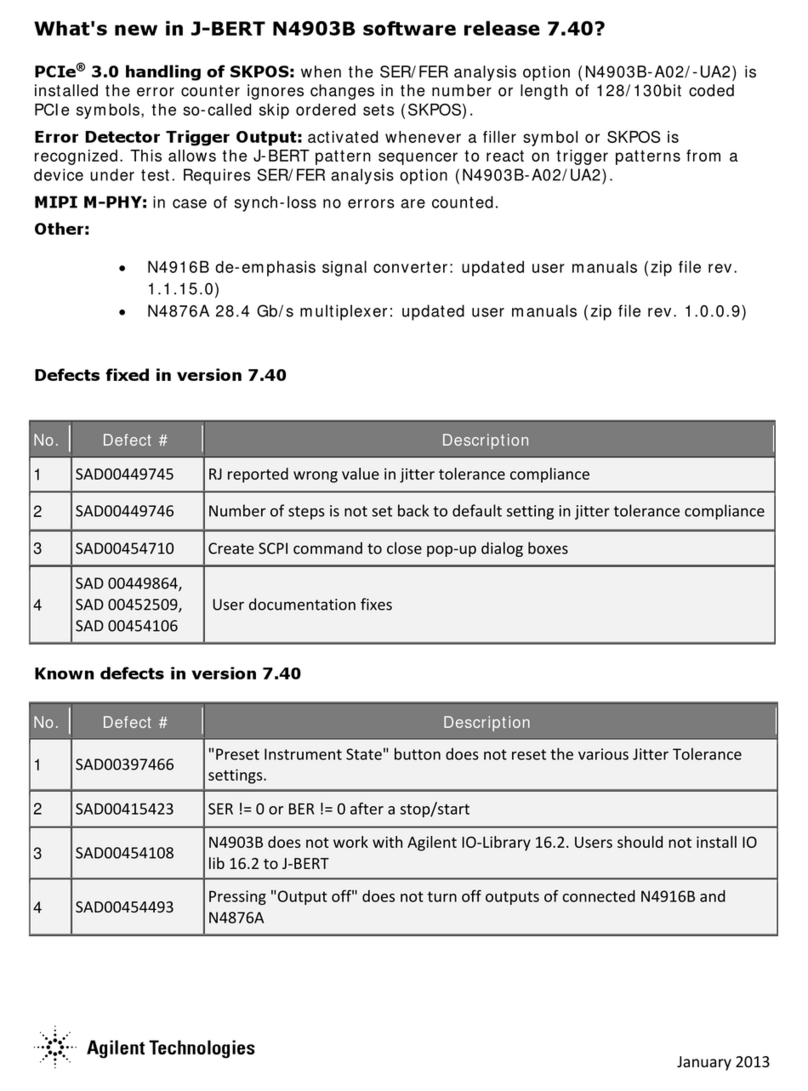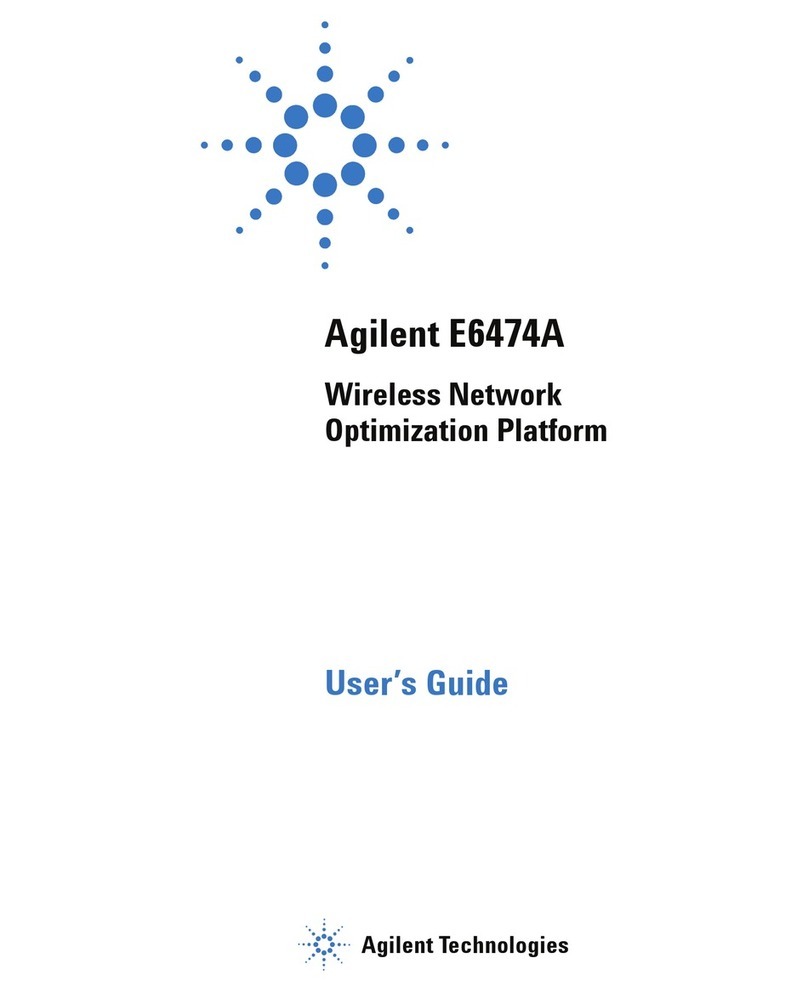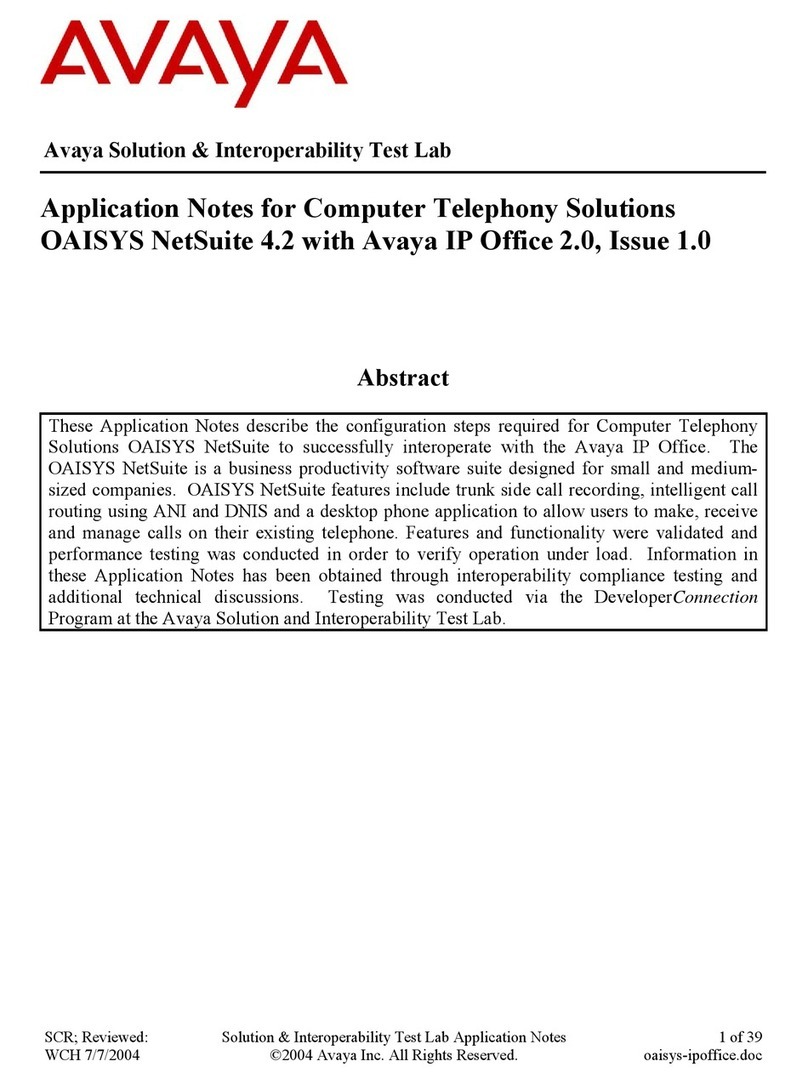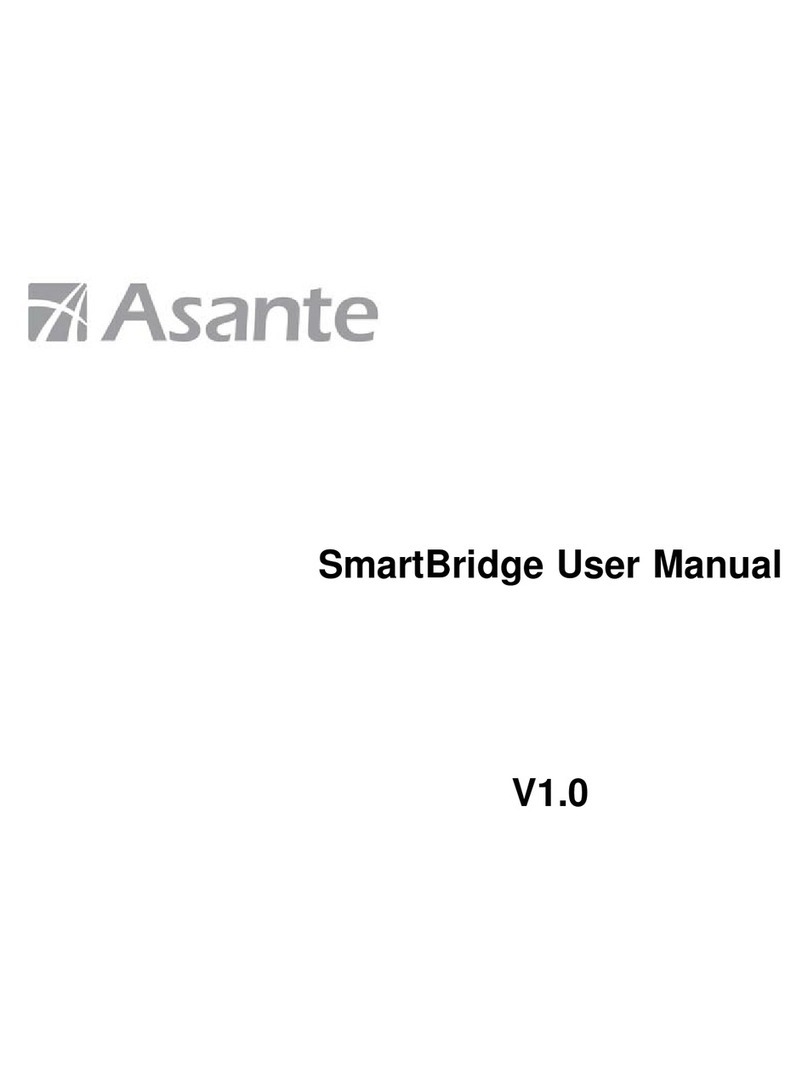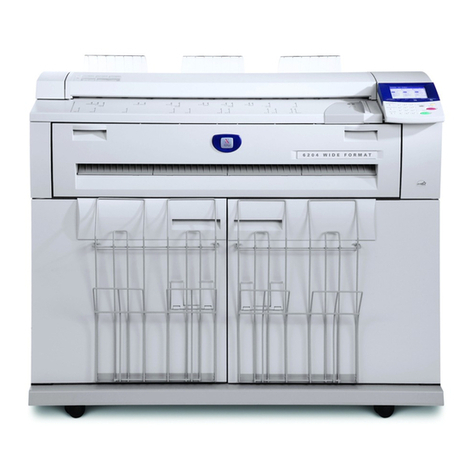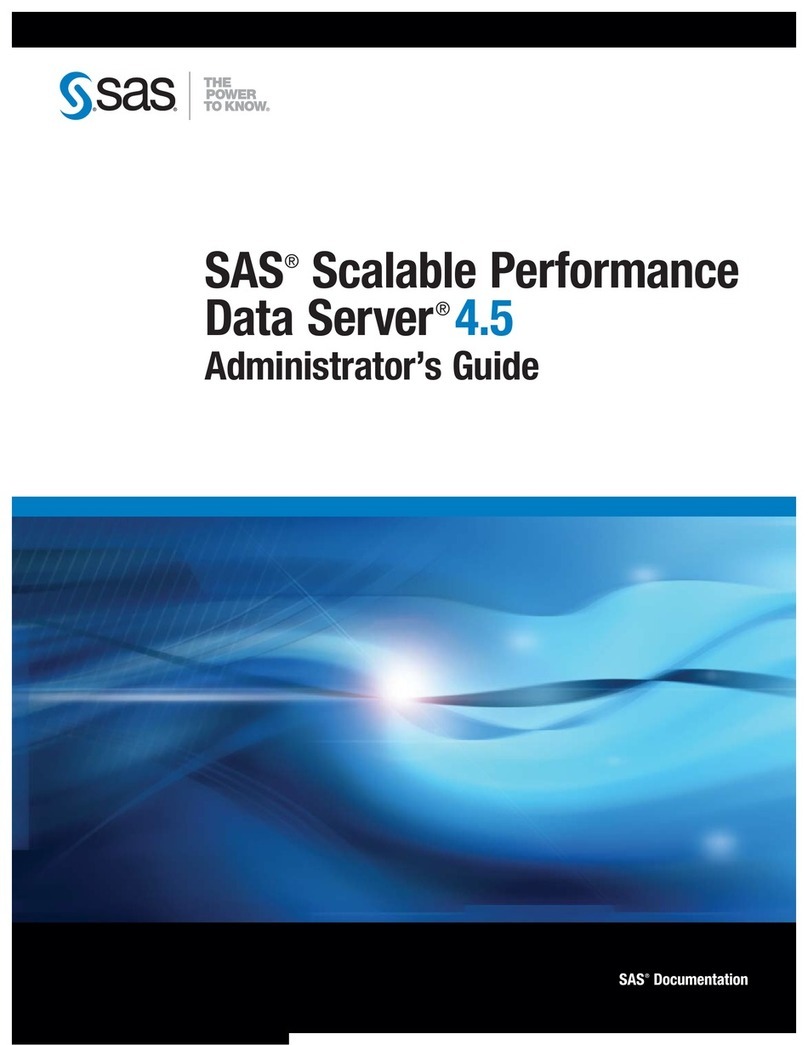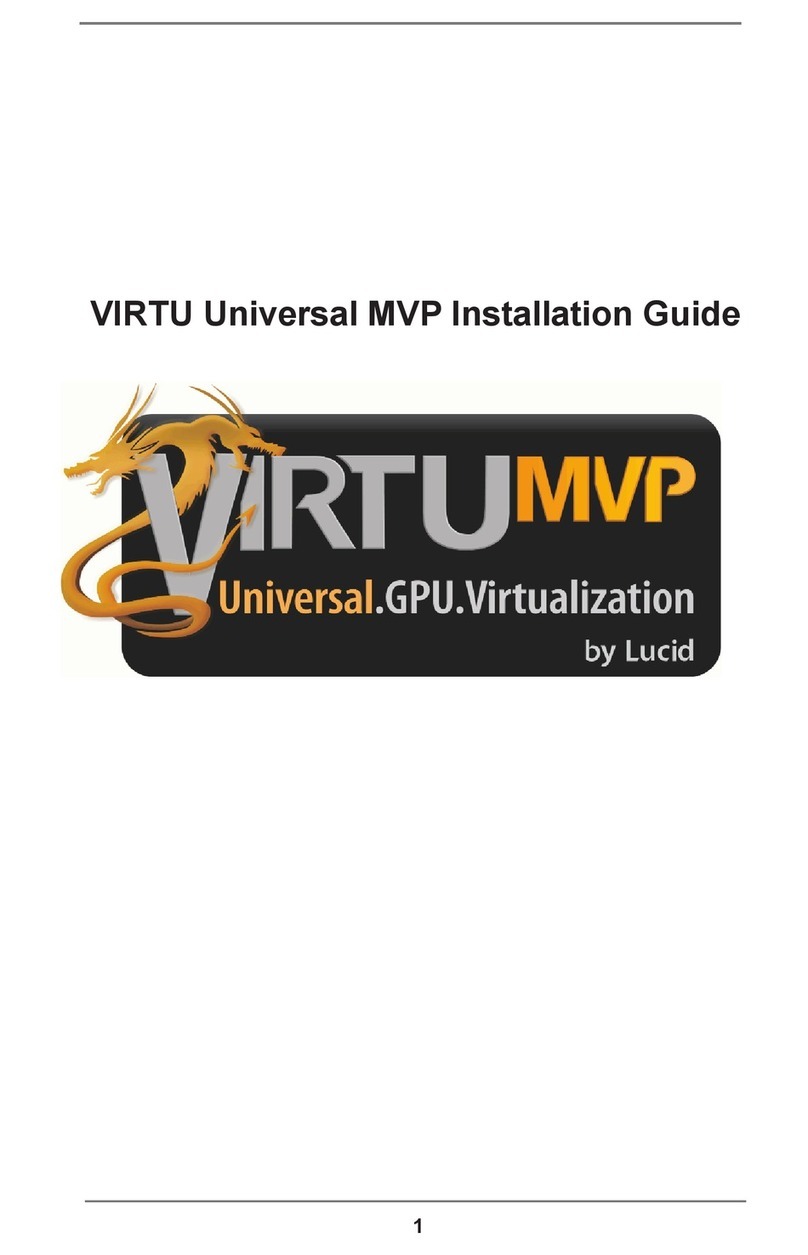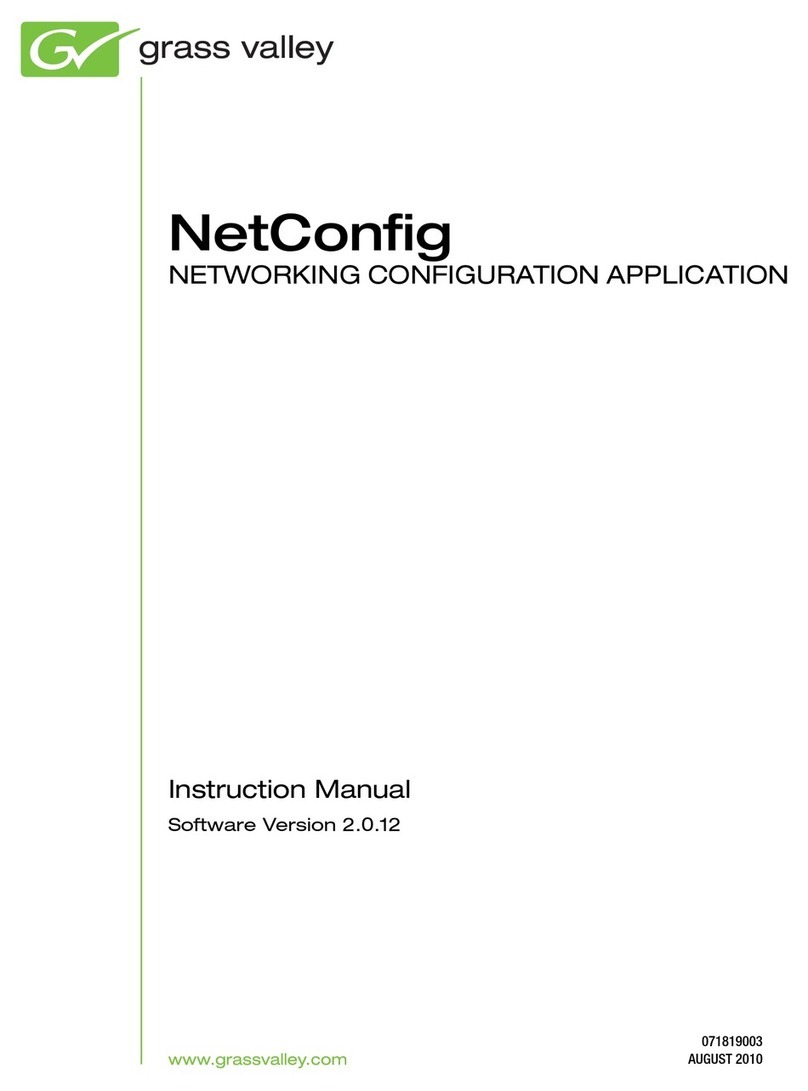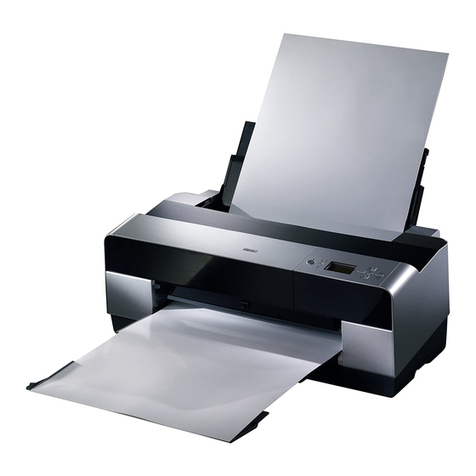
2
testing, NanoSuite 6.2 has a method
for testing in compliance with ASTM
C1557.
Our applications engineers keep
abreast of developments in material
science and testing so that each
release of NanoSuite features new
and improved test methods. With
NanoSuite 6.2, new indentation
methods measure the complex
modulus of polymers, gels, and
biological tissue. Also new are
indentation methods which measure
the creep response (strain-rate
sensitivity) of metals, even as
thin films.
Recognizing that our customers use
our instruments to push the envelope
of materials testing, we make these
same method-development tools
available to our customers through
NanoSuite Explorer and on-line
training. With Explorer, the G200
and the T150 become all-purpose
tools, able to apply force, measure
displacement, and interpret data
according the user’s unique
specifications.
New Agilent Express Test
NanoSuite 6.2 also enables a totally
novel, ultrafast way to conduct
high-precision nanomechanical tests.
Designed for exclusive use with
NanoSuite 6.2 also provides a variety
of 2D and 3D graphs which can be
sent to Microsoft Excel as-is.
As in the package’s previous iteration,
an intuitive interface allows users to
set up and run experiments quickly
— changing calculation parameters
as often as desired — with just a
few clicks. NanoSuite 6.2 offers
support of small force/displacement
measurements, from MEMS testing to
tensile experiments, surface topology,
polymers, and more. Versatile imaging
capabilities, survey scanning, and
streamlined test method development
help researchers get from testing to
results in record time.
Powerful New
NanoSuite Methods
Testing procedure and analysis are
defined by means of test methods
which are relatively independent
of the NanoSuite application. This
application/method software
architecture provides unparalleled
access to standard, advanced, and
even novel testing. For standard
nanoindentation testing with the
G200/G300, NanoSuite 6.2 has a
method for testing in compliance with
ISO 14577, and the determination
of indenter area function has been
greatly simplified, involving just a few
mouse clicks. For standard tensile
the Nano Indenter G200, the new
Express Test option performs one
complete indentation every second,
meaning that 100 indentations can
be performed at 100 different sites
in 100 seconds! Highly versatile,
easy-to-use Express Test methods
are ideal for applications involving
metals, glasses, ceramics, structural
polymers, thin films, and low-κ
materials. There is now a new
Express Test method for thin films
that incorporates the thin-film model
for rapid measurement of substrate-
independent Young’s modulus.
In order to achieve all of these
revolutionary measurements, the
G200 must be configured with a
DCM II indentation head, Agilent’s
NanoVision stage option, and the
new Express Test option.
New Batch Testing
Capabilities
NanoSuite 6.2 lets researchers
quickly create new batches of tests
for multiple samples. In addition to
easily adding, editing, reviewing,
or deleting samples, researchers
can select a previously run batch of
tests as a template for the current
run. Utilizing this NanoSuite 6.2
technique, a standard batch of tests
comprising 25 or more samples can
be set up in 5 minutes or less.
Figure 1. New test method for Express Test gives the substrate-
independent Young’s modulus of a 1000nm low-κfilm on silicon by
means of 98 indents performed in just 7 minutes (green circles).
Figure 2. New test method measures the strain-rate sensitivity
of SAC 105 solder to be m= 0.184±0.013, obtained as the slope of
the logarithm of hardness vs. the logarithm of strain rate.
